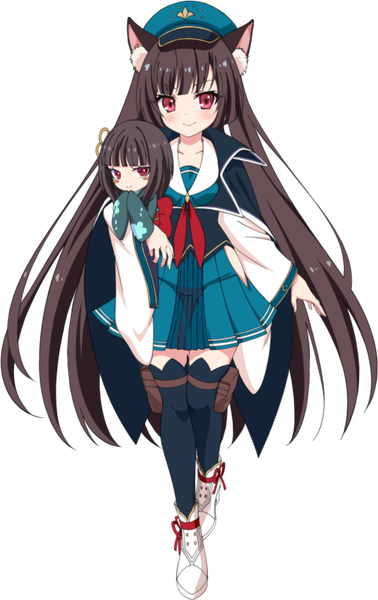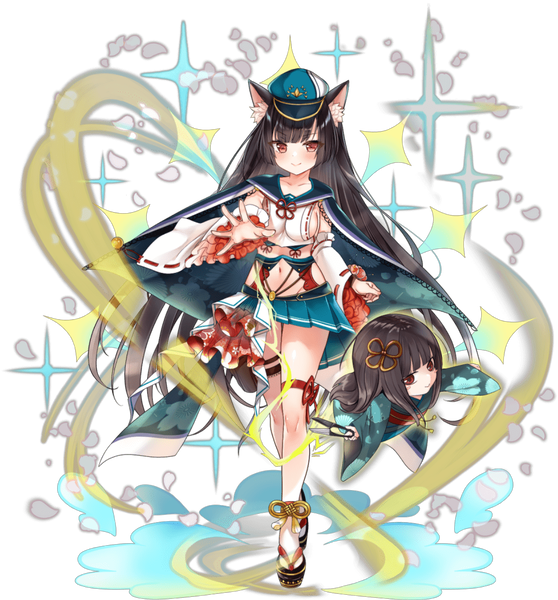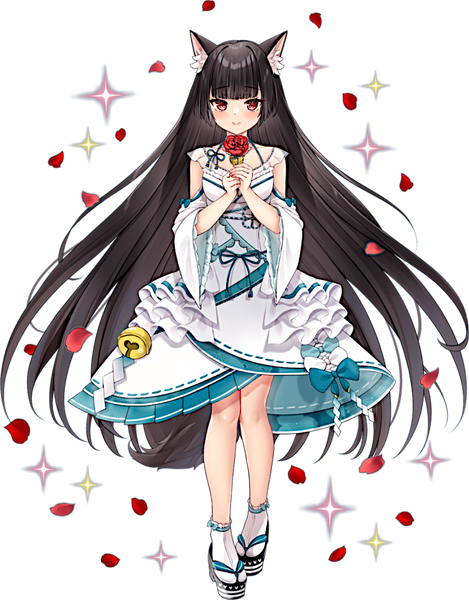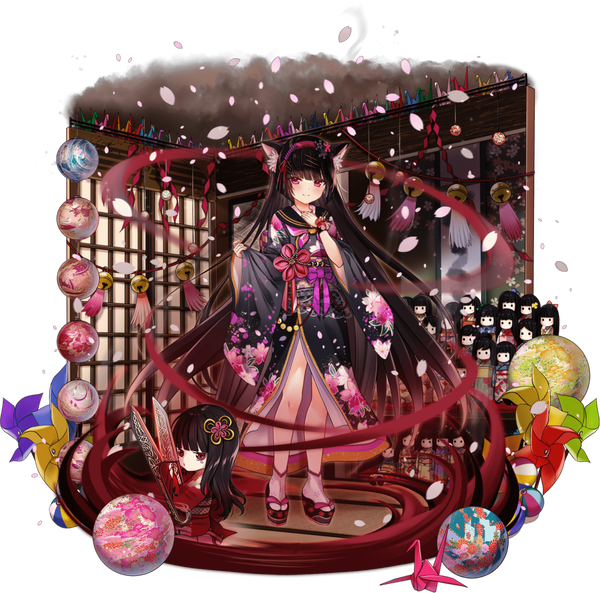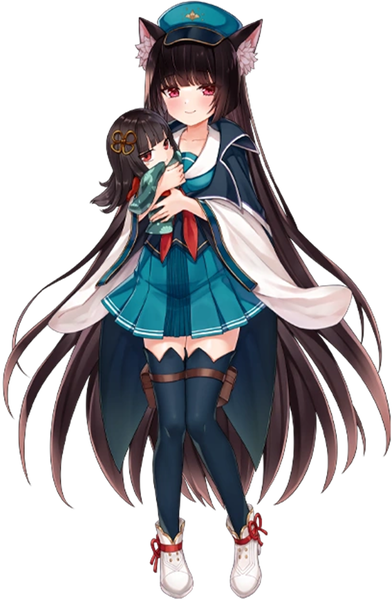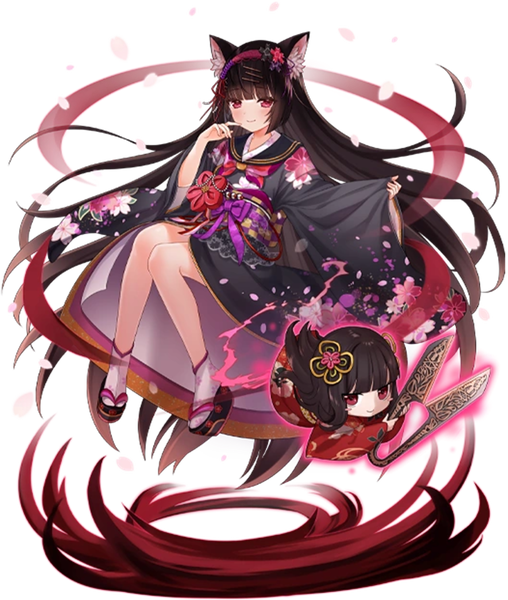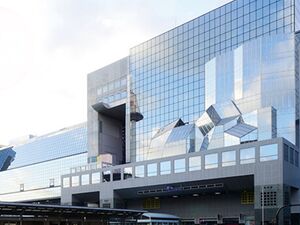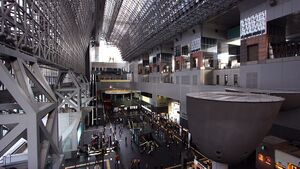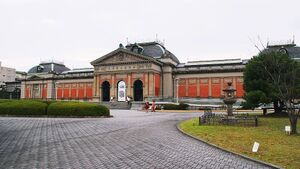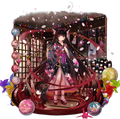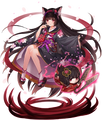Miyako
| Miyako | |||||
|---|---|---|---|---|---|
| Japanese Name | ミヤコ | ||||
| Weapon | |||||
| Race | Beast | ||||
| Nationality | |||||
| Birthday | February 6 | ||||
| Constellation | Aquarius | ||||
| Talents | Making and dressing up costumes for dolls | ||||
| Likes | Dolls | ||||
| Dislikes | Two-faced people, Sarcasm | ||||
| Strengths | Has courage and guts | ||||
| Weaknesses | Inability to understand people's emotions well | ||||
| Hobbies | Making dolls | ||||
My name is Miyako and I am a member of the M. Nishiki Railway Army. I am the deputy commander of Versailles Corps in the Allied Forces. After the incident at the Metro Hole, we all got separated, so now it's just me and Versailles, our captain. I can handle sorcery and dolls. Pleased to be of your acquaintance.
Layers
| Icon | Title | Release Date | Where to Obtain |
|---|---|---|---|
| [Tailor for Dolls] Miyako | 2022 February 15 | [The Baked Doll is a Glutton] Pick Up Gacha, Premium Gacha | |
| [The One With Dolls] Miyako | 2022 February 15 | [The Baked Doll is a Glutton] Event Reward | |
| [Dressed Up in Apparel] Miyako | 2022 September 16 | 2nd Anniversary Login Bonus | |
| [Doll-Loving Sorceress] Miyako | 2022 March 24 | 1.5 Anniversary Limited Gacha 2 |
Obtained Skills
Trivia
- Miyako's birthday is the opening date of Kyoto Station in 1877.
- Miyako's beast motif is the fox. Fushimi Inari Taisha is a major Shinto shrine located near Kyoto Station, hosting the fox god Inari.
- Kyoto is said to be the place of origin of Japanese dolls, they were popular among the aristocracy during the Heian Period. Even in the imperial court, the aristocracy played with dolls in the same way children did, dressing them up and acting out court life.
- The name "Miyako" is a reference to the Miyako Odori Festival, a Geisha dance performance traditionally held in April in the newly reconstructed Minami-za kabuki theatre building in Kyoto. Miyako can also be 都, which is another way to pronounce the kanji of 都 in 京都 (Kyoto).
- Miyako is one of six train knights who were a part of a collaboration event in Flower Knight Girl (From Beyond the World of Flowers / 花の世界の向こうから) that was held from April 15th, 2024 to April 30th, 2024. The other featured train knights were Victoria, King's Cross, Yakutsk, Yoshino, and Paddington. In the event's story mode, Miyako is paired with Zenmai / Asian Royal Fern and Otometsubaki / Japanese Camellia. Asian Royal Fern is skilled at creating wooden dolls that can move on their own while Japanese Camellia has a doll named Chie who she can communicate with and vice-versa. Upon seeing the mutual trust that Asian Royal Fern and Japanese Camellia have with their dolls, Miyako assists them with her sorcery in order to increase the strength of each doll in battle.
Counterpart
Kyōto Station (京都駅) is a major railway station and transportation hub in Kyōto, Japan. It has Japan's second-largest station building (after Nagoya Station) and is one of the country's largest buildings, incorporating a shopping mall, hotel, movie theater, Isetan department store, and several local government facilities under one 15-story roof. It also housed the Kyōto City Air Terminal until August 31, 2002.
The station has a side platform and four island platforms serving eight tracks for the Tokaido Line (Biwako Line, JR Kyoto Line) and Kosei Line at ground level, three dead-end platforms serving four tracks for the Sanin Line (Sagano Line) to the west of platform 0 at ground level, and two dead-end platforms serving 3 tracks to the south of platform 7 at ground level. Two island platforms serving four tracks for the Shinkansen are elevated, above the platforms for the Kintetsu Kyoto Line.
The governmental railway from Kobe reached Kyoto on September 5, 1876, but the station was under construction and a temporary facility called Ōmiya-dōri (Ōmiya Street) Temporary Station was used until the opening of the main station. The first Kyoto Station opened for service by decree of Emperor Meiji on February 5, 1877. In 1889, the railway became a part of the trunk line to Tokyo (Tokaido Main Line). Subsequently, the station became the terminal of two private railways, Nara Railway (1895, present-day Nara Line) and Kyoto Railway (1897, present-day Sagano Line), that connected the station with southern and northern regions of Kyoto Prefecture, respectively.
The station was replaced by a newer, Renaissance-inspired facility in 1914, which featured a broad square (the site of demolished first station) leading from the station to Shichijō Avenue. This station burned to the ground in 1950, and was replaced by a more utilitarian concrete facility in 1952. The current Kyoto Station opened in 1997, commemorating Kyoto's 1,200th anniversary. It is 70 meters high and 470 meters from east to west, with a total floor area of 238,000 square meters. Architecturally, it exhibits many characteristics of futurism, with a slightly irregular cubic façade of plate glass over a steel frame. The architect was Hiroshi Hara. Wikipedia
The Kyoto National Museum, then the Imperial Museum of Kyoto, was proposed, along with the Imperial Museum of Tokyo (Tokyo National Museum) and the Imperial Museum of Nara (Nara National Museum), in 1889, and construction on the museum finished in October 1895. The museum was opened in 1897. The museum went through a series of name changes, in 1900 changing its name to the Imperial Household Museum of Kyoto, and once more in 1924 to the Imperial Gift Museum of Kyoto. The current name, the Kyoto National Museum, was decided upon in 1952.
The museum consists of several buildings, the most prominent being the Special Exhibition Hall (Main Exhibition Hall), designed by Katayama Tōkuma in 1895, and The Collections Hall (New Exhibition Hall), designed in 1966 by Morita Keiichi. In September 2014, the museum completed renovations on a new permanent collections hall, the Heisei Chishinkan Wing (The Collections Galleries), designed by Yoshio Taniguchi, known for his redesign of the Museum of Modern Art in New York and his design of the Gallery of Hōryū-ji Treasures at the Tokyo National Museum.
The regular exhibitions are shown in The Collections Galleries, while the Special Exhibition Hall is used for special exhibits. The Main Exhibition Hall, the Main Gate, and the Ticket Area have all been designated as Important Cultural Properties in Japan. The museum was originally built to house and display art treasures privately owned by temples and shrines, as well as items donated by the Imperial Household Ministry. Currently, most all of the items in the museum are more or less on permanent loan from one of those places. The museum focuses on mainly pre-modern Japanese works (it is said to have the largest collection of Heian period artifacts) and Asian art. The museum is also well known for its collections of rare and ancient Chinese and Japanese sutras. Other famous works include senzui byōbu (landscape screen) from the 11th century, and the gakizōshi (Scroll of Hungry Ghosts) from the 12th century.Wikipedia
Map
Gallery
- Pages using Tabber parser tag
- Pages using DynamicPageList3 parser tag
- Weapon Artifact
- Beast
- Nishiki
- Aquarius
- Element Cut
- Element Dark
- Element Light
- Element Fire
- Metro Train Knights
- Japan

